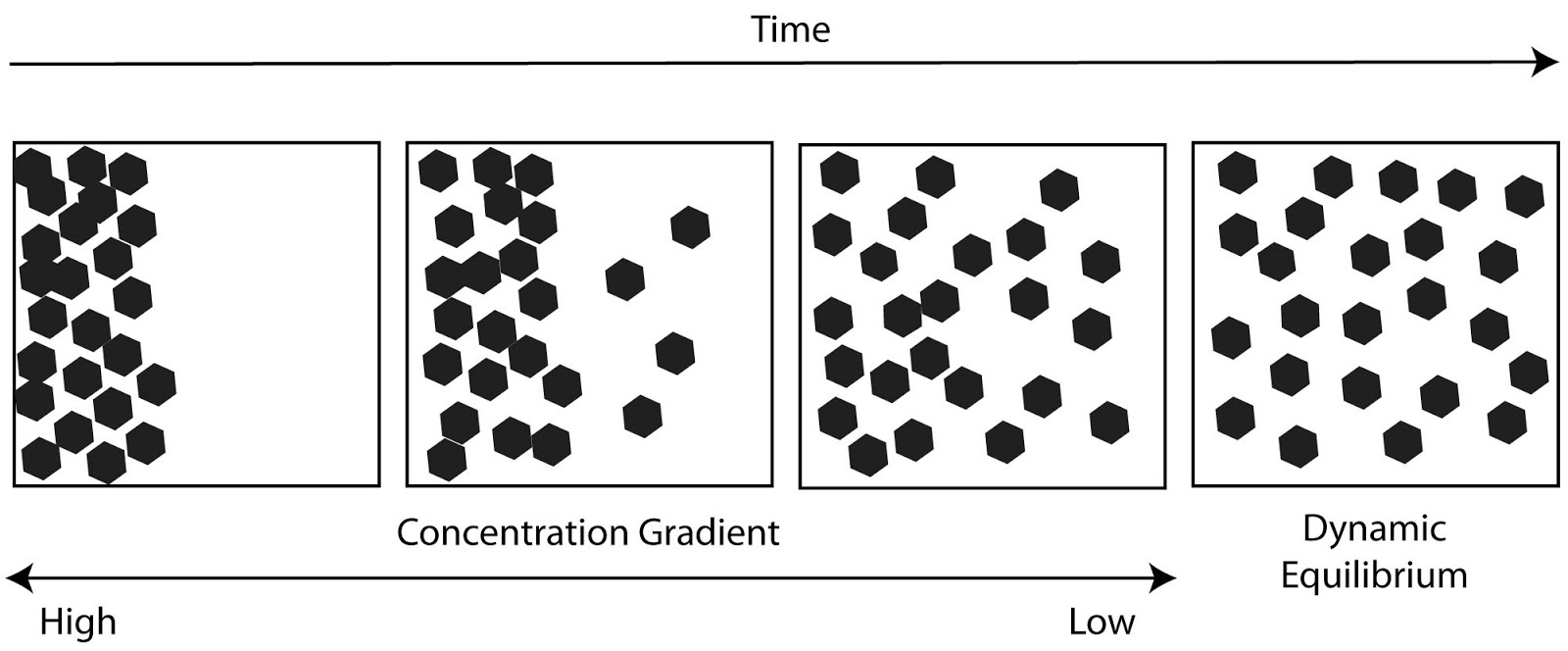Doctor's Notes 1
In order for Yuki to grow and take in the proper nutrients, we need to understand how organic molecules enter and leave her cells. There are two types of movements for substances to move across the cell membrane, passive transport and active transport.
In order for Yuki to grow and take in the proper nutrients, we need to understand how organic molecules enter and leave her cells. There are two types of movements for substances to move across the cell membrane, passive transport and active transport.
If membranes of an animal cell are selectively permeable and there are concentration gradients extant in some of the molecules but not in others, then there must be “transporters” that allow specific solutes to cross the membrane.
- Some substances are able to use passive transport to cross the cell membrane, this transport does not involve energy from the cell.
- Passive transport is high concentration to low concentration (substances move down their concentration gradient)
- Three forms of passive transport; diffusion, osmosis, and facilitated diffusion.
- Diffusion- molecules move from an area of higher concentration to an area of lower concentration until they reach equilibrium; a state of equality on both sides.
- Osmosis- process in which free water molecules diffuse across the cell membrane.
- Water moves from areas of low solute concentration to areas of high solute concentration until the solute concentrations are in equilibrium.
- If the animals cell’s membrane has a lower solute concentration than outside of the membrane, then the outside solution is said to be hypertonic (water will mostly diffuse from the inside solution to the outside solution)
- Hypertonic- if too much water leaves the cell, the cell will shrink or shrivel up, killing the cell.
- Hypotonic areas are found when the solution of the membrane has a lower solute concentration than the inside of the cell. (water will mostly diffuse from the outside solution to the inside and if there is too much water inside the cell, the cell may swell and eventually lyse, or burst)
- Facilitated diffusion- molecules are assisted by special transport proteins.
- Uses ion channel proteins and carrier proteins, that are found in the cell membrane, and can transport substances into and out of the cell.
- Ion channel proteins allow specific ions to pass through the membrane.
- Regulated by the cell and control the passage of substances that enter or leave the cell.
- Lastly, carrier proteins attach to specific molecules to move the molecules across the membrane.
Osmosis
Diffusion
Facilitated Diffusion
No comments:
Post a Comment